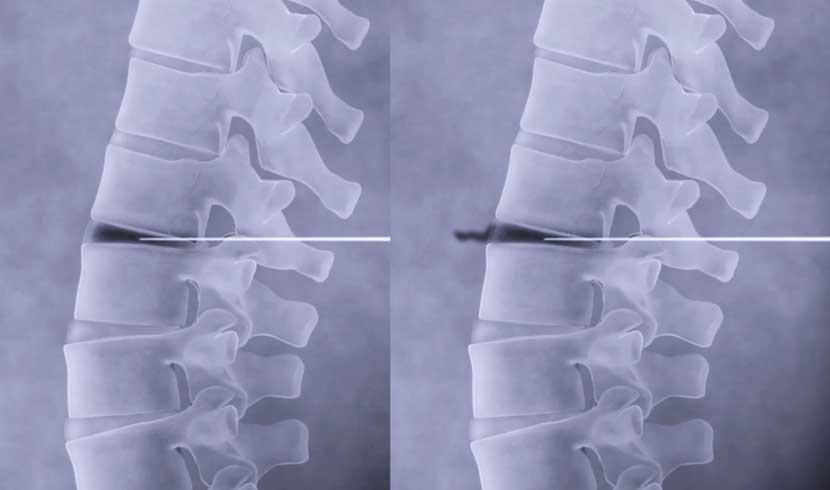Discogram

What is a Discogram?
A discogram procedure is an important diagnostic tool used to identify the location of pain-causing pathology in the spine. Chronic back pain affects approximately 20% of 20 to 59-year-olds. In many cases, this pain is caused by damage to one or more of the intervertebral discs which separate and cushion the bones of the spine. A variety of radiologic studies are used to evaluate disc back pain such as x-rays, CT scans, and Magnetic Resonance Imaging or MRI. Another helpful tool is the discogram. In most car accident cases, your injury doctor can order a discogram to identify the location of the pain. This useful procedure helps accident doctors to prepare the right treatment plan for the patients.
A discogram is a test done under radiographic guidance that can pinpoint the location of intervertebral disc pain. It is a minimally invasive procedure during which a dye is injected into a specific disc. The dye lights up, or fluoresces, the area under x-ray. The doctor will observe whether the dye remains within the disc, or leaks out. A leaking disc indicates pathology. In some cases an anesthetic is injected into the problematic disc, thus relieving pain.
Preparing for a Discogram Procedure
Because special equipment is needed, a discogram is done either in a hospital or outpatient surgical center that has appropriate radiologic capabilities. Prior to the procedure date, you should notify your doctor of any medication you are taking or any recent illnesses. Women must notify their doctor of pregnancy.
Certain medications and vitamin supplements may cause complications when taken within the week prior to a discogram. For example, blood thinners such as warfarin, aspirin, and non-steroidal anti-inflammatories can cause excessive bleeding. You should also mention any past allergic surgical reactions to your doctor, including those to injectable contrast dyes or shellfish.
To improve comfort, a sedative may be given intravenously during the procedure along with an antibiotic to prevent infection. A local anesthetic will also be administered at the disc access points. You may feel tired after a discogram, so it is always best to have someone accompany you back home.
What to Expect during During Discogram?
The discogram itself should take no longer than 30 minutes to an hour, but you should allow a total of up to three hours for preparation and recovery time. During the procedure, you will be asked to lie on your abdomen or side so that your back is exposed.
The skin will be cleaned with an antiseptic, and a local anesthetic will be administered. Although you will receive a sedative, you will be awake for the majority of the procedure. This is necessary so you can communicate the location of your pain to the doctor performing the discogram.
Throughout the procedure, an x-ray machine will provide real-time images of the bones and intervertebral discs. This is called fluoroscopy. In some cases, a CT scan will be used to enhance the views of your spine. With this guidance, a needle will be inserted through the skin, into a disc, and a dye will be injected.
If there is a disc herniation or tear, the dye will leak out of the disc. If, however, the disc is intact, the dye will remain within the disc’s center. The procedure itself should elicit minimal to no pain. If pain is felt, this also indicates a problem with the sensitive disc.
Pain can be treated by injecting an anesthetic into the disc. When there is more than one disc of concern, the needle procedure will be repeated on the additional discs.
What happens After The Discogram Procedure?
Following the procedure, you may spend 30 minutes to an hour in a recovery room, once the intravenous medication has been discontinued. There may be some mild discomfort at the location of the needle’s insertion, but this should resolve within 24 to 48 hours.
Applying an ice pack may be helpful. If any medications were discontinued prior to the discogram, you should speak with your doctor to determine when to resume these. Occasionally, increased back pain, infection, headache, or nausea occur after a discogram, and rarely, spinal blood vessel or nerve injury.
The results of your test will be interpreted by your doctor and used in conjunction with previous radiologic studies to determine the best treatment plan for your back pain.

